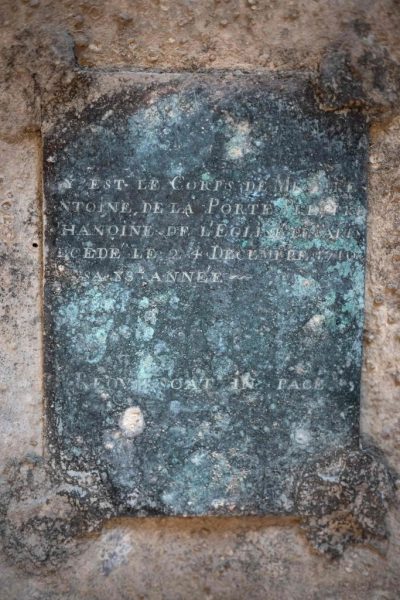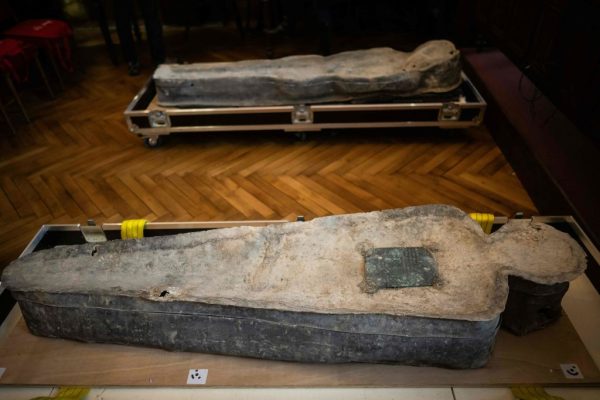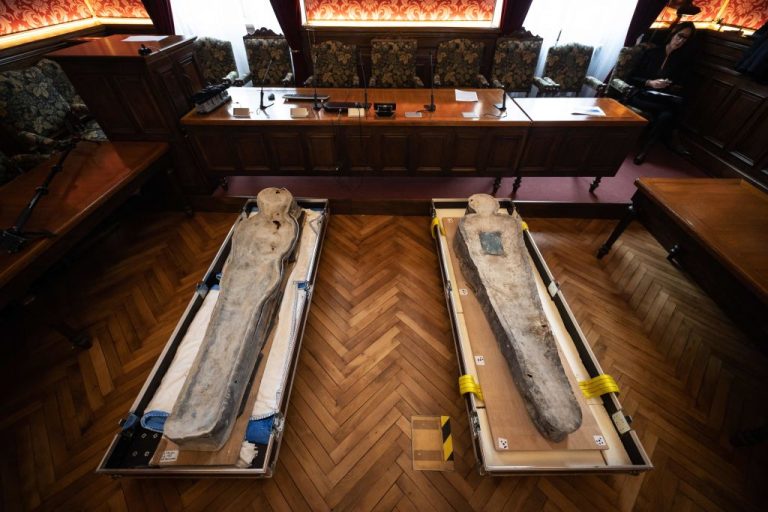Following the catastrophic fire that damaged much of the iconic Notre Dame Cathedral three years ago, archaeologists were employed to both survey the damage and assist with the restoration. While excavating the site in early 2022, two unusual lead sarcophagi, suspected of being placed at the site centuries ago, were found; however, the identities of the occupants remained a mystery, until now.
Researchers now believe the sarcophagi contains the remains of two wealthy men, one ecclesiastical, or member of the clergy, who is suspected to have suffered from the “disease of kings” and the second a young nobel that researchers believe led a difficult life.
The “disease of kings” otherwise known as gout or gouty arthritis received its name due to its association with rich foods and alcohol consumption.
Professor of biological anthropology at the University of Toulouse III, Eric Crubézy, was tasked with opening the sarcophagi last month and has studied the remains to learn more about the age at which the men died and about their lifestyles.

In an email to Live Science Crubézy said that “the first subject is identified via an identification plate on his coffin.” The name of the man was Antonie de la Porte, who died at the age of 83 On Christmas Eve in 1710.
Success
You are now signed up for our newsletter
Success
Check your email to complete sign up
Crubézy said that de la Porte was a canon, a member of the clergy responsible for the cathedral. It’s believed de la Porte used his wealth to operate the cathedral’s choir which may be why he was entombed underneath the central part of the transept, an area typically reserved as the final resting place of the elite.
A statement, issued by the University of Toulouse, said that de la Porte’s remains were well preserved, including his bones, head and beard as well as some textiles and that three medals adorned the sarcophagus.
According to Crubézy de la Porte’s teeth were in “great shape” and that he believes he most likely lived a sedentary lifestyle due to a lack of observed physical activity on his corpse.
However, the clergy’s big toe bone showed signs of gout (disease of kings) which can be triggered by drinking alcohol and eating to excess.
No name plate was found on the second sarcophagus and his identity remains a mystery however researchers believe he was between 25 and 40 years old at the time of his death and most likely lived a difficult life. “He shows signs of someone who has been riding horses from a young age and he lost most of his teeth in the years and months leading up to his death,” Crubézy said according to Live Science.
Upon examining the remains, Crubézy concluded that the man may have died due to chronic meningitis as a result of tuberculosis after he found evidence of reactive bone on the man’s skull and spine.
The unknown man has been nicknamed “Le Cavalier” who researchers say underwent an “intriguing” post-mortem funeral practice which involved placing flowers around his skull and on his abdomen. “The horseman’s skull had been sawn off and his chest opened to be embalmed,” Crubézy said, adding that, “This was common practice in the nobility after the [mid 16th century].”

Hope remains that the second man can be identified.
Christopher Besnier, an archaeologist who led the National Institute of Preventive Archaeological Research (INRAP) excavation team told The Guardian, “If the date of his death was around the second half of the 16th century or early 17th century, we may be able to identify him in the death register that we have. If it’s earlier than that, we probably won’t ever know who he was.”
Researchers plan to continue their investigations over the coming months and hope to discover more about the men’s geographical origins, diets, lifestyles and deaths. Analyses are expected to be completed in early to mid-2023.







